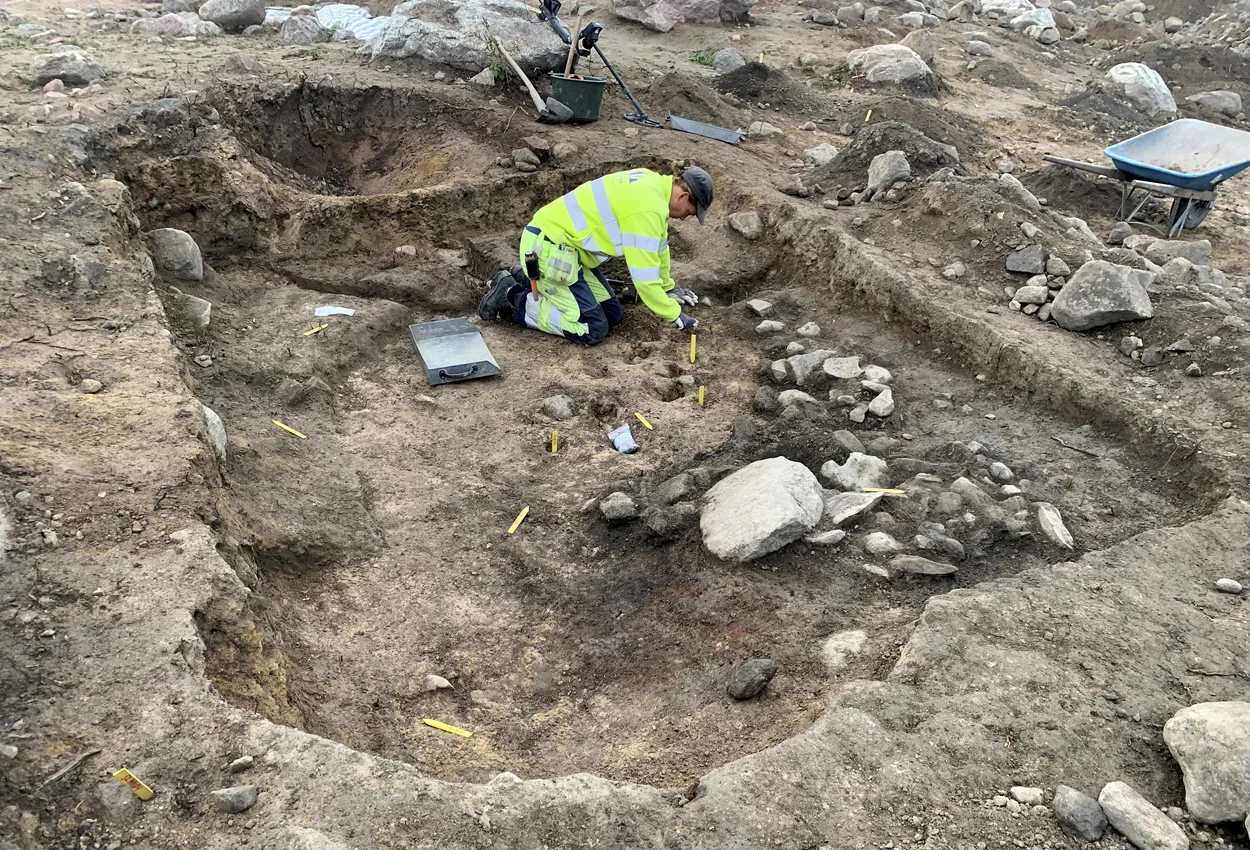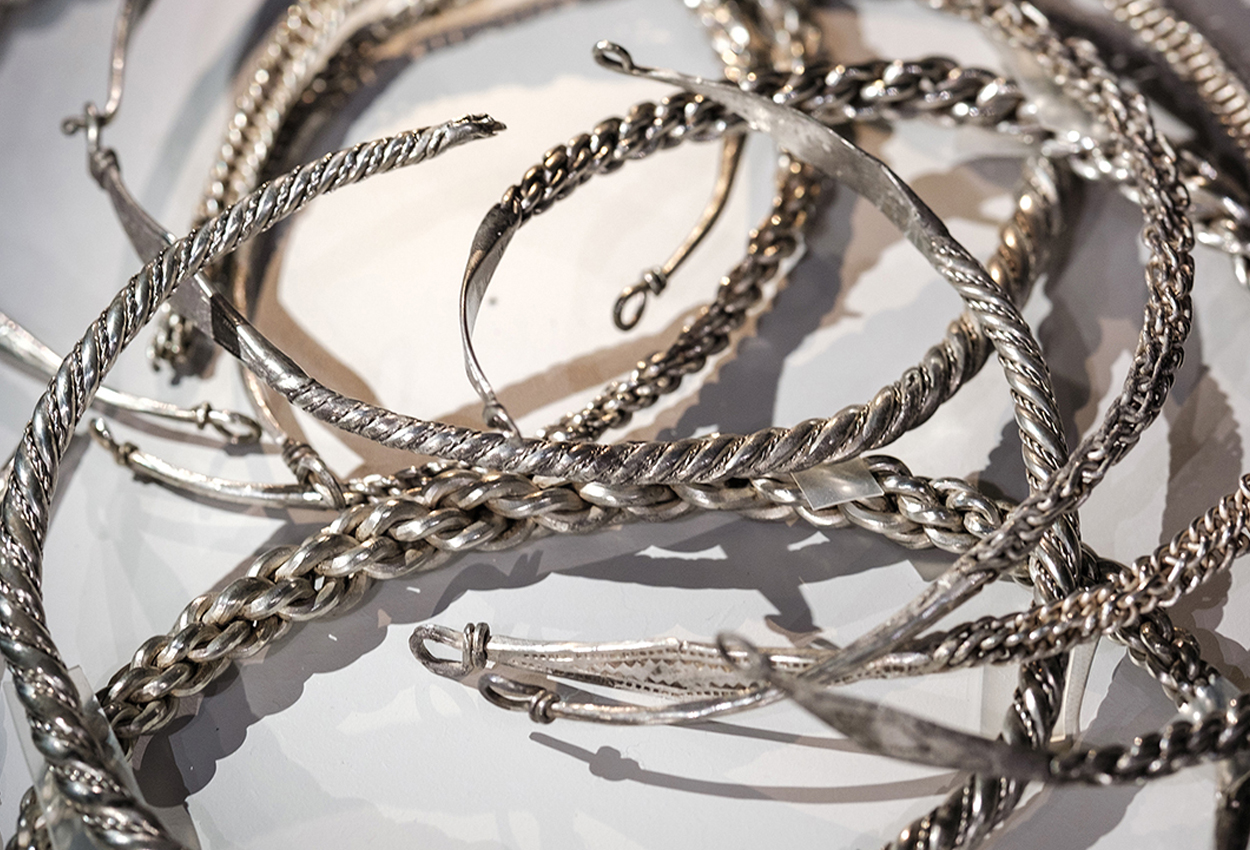Several significant Viking-era discoveries have been made in Täby, Sweden, where archaeologists from Arkeologerna have uncovered a large silver hoard alongside the remains of an extensive farming settlement.
Excavations found the remains of 34 buildings, a cemetery, as well as 1,450 associated artefacts. Among them, a large silver hoard consisting of ornate arm and neck rings, a silver amulet, beads, pearls, and coin pendants.
The hoard was discovered in a ceramic pot, which also contained a fabric bag used to hold the coin pendants, grains, medicinal plants, and pearls. According to experts, the pendants were crafted from coins originating in Persia, Bavaria, Bohemia, Normandy and England.

John Hamilton from the State Historical Museums, said: “The find is unique not only because of the variety of silver objects it contains, but also because of its direct association with the farmstead and burial site. The treasure may have been buried at the end of an elaborate ceremony held to honor a high-ranking woman who had passed away.”
The settlement is located on a small hill overlooking the forests around Viggbyholm, Täby. Archaeological evidence indicates that the site was actively farmed from AD 500 to 1050, overlapping with the late Iron Age and the beginning of the Early Middle Ages.
Many pottery fragments were also uncovered. While some vessels were made of local clay, their shapes resemble pottery commonly found across the Baltic Sea, suggesting that some of the site’s inhabitants may have migrated from other regions.
DNA analyses were conducted on skeletal remains from four men. Although the samples were somewhat degraded, researchers could establish family relationships among most of the individuals, while a few appeared to be unrelated newcomers.
Header Image Credit : Arkeologerna, SHM
Sources : Arkeologerna





